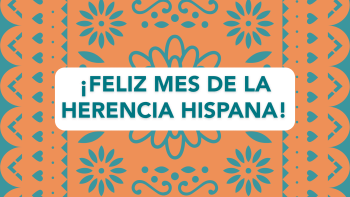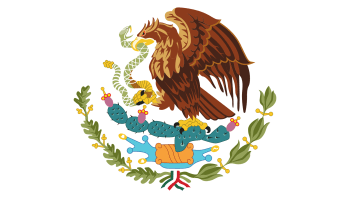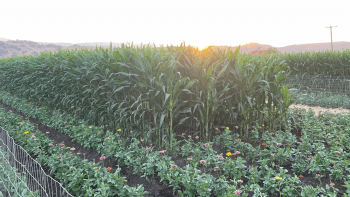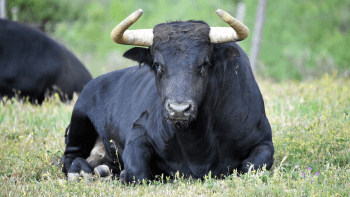Nature, Culture & Community: Honoring Hispanic Heritage Month

¡Feliz Mes de la Herencia Hispana! Did you know that across the globe, 21 countries are home to majority Hispanic populations? And here in the United States of America, roughly 19% of the population is Hispanic. In celebration of Hispanic Heritage Month, the Open Space Authority sought to better understand how various Hispanic cultural symbols connect back to nature and, in particular, the nature of Santa Clara Valley. Learn with us!

Mexico
Due to its proximity to California, some of Mexico’s most notable nature-focused cultural symbols also exist in the Santa Clara Valley. For instance, a rattlesnake being snatched by a golden eagle sitting atop a prickly pear is prominently featured on Mexico’s coat of arms.
• The golden eagle: The golden eagle represents the god of war and the sun, Huitzilopochtli, who guided the Aztecs to the Valley of Mexico to establish the city of Tenochtitlan (what is now Mexico City).
• Rattlesnake: Before the Aztecs migrated to Tenochtitlan, Huitzilopochtli is said to have told the people to look for an eagle eating a snake to determine the best place to make a home. The snake represents wisdom, but in other religious contexts may be referred to as a symbol for good (the eagle) versus evil (the snake).
• Nopal (prickly pear): The nopal, which means prickly pear in Spanish, is a type of cactus that is commonly found in Mexico and bears bright red fruits called tunas . It is believed that the tunas are a symbol of the heart of Huitzilopochtli’s nephew who grew nopales on his land, which later became Tenochtitlan.
All three of these symbols - the eagle, rattlesnake and prickly pear - are flora and fauna that exist throughout Santa Clara Valley. The Golden eagle is often spotted soaring across the landscape (check out the latest sighting on iNaturalist!) while rattlesnakes and prickly pears* are abundant, especially during the late spring and summer.
*Note: Nopal, or the prickly pear, is not native to the Santa Clara Valley.

Maize: Maize, or corn, also has significant symbolic meaning in Hispanic cultures across Latin America. This special crop was likely domesticated in Mexico by ancient indigenous civilizations, such as the Mayans and Aztecs. Not only did these groups grow maize for food, but they also worshipped the crop and believed that humankind was made from it. A mythical tale encapsulates the importance of maize for pre-Hispanic indigenous groups in which the god Quetzalcotl, in the form of a black ant, traveled across a set of mountains to bring back a single grain of maize for planting. Today, maize is still grown throughout the world in places like Mexico and Argentina. In the Santa Clara Valley, farmers grow sweet corn, a modified descendent of maize, providing residents with access to fresh, locally grown, modernized “maize” every summer.

Herons: The Aztec people of Mexico also placed great significance on herons – Aztlan, or the homeland of the Aztec people, means the “Land of White Herons,” also known as great egrets. In addition to their significant presence across the land, the egret’s feathers were also commonly used by warriors as decorative headpieces to signify courage while facing death. In addition to great egrets, other species of herons living in Santa Clara Valley include the great blue heron, green heron and black-crowned herons. If you’re lucky, you may spot an egret or heron at Laguna Seca in Coyote Valley – one of many locations that make up the Pacific Flyway, a migration route for birds traveling between Alaska in the North to Patagonia in the South.

Spain
El Toro: Originally used in a 1950s advertising campaign for an alcoholic beverage company, the silhouette of el toro, or a bull, became a cultural symbol that indicates strength, power and national pride. Bulls also play a significant role in Spanish culture through the traditional (yet controversial) ritual of bullfighting where a matador, or “fighter,” comes face-to-face with a bull. Over three choreographed stages, the bull is weakened and then killed, symbolizing the way in which ancient Spanish populations worshipped and sacrificed el toro.
In Santa Clara Valley nature, bulls exist in more ways than one. Tule elk bulls, while not the same as the black angus bull used as a motif in Spain, can be found at Mayyan ‘Ooyákma – Coyote Ridge Open Space Preserve and adjacent lands that make up the Diablo Range.
While they’re not native to Santa Clara Valley, it’s possible you may even spot a black angus bull in the region when local ranchers bring their cattle to Open Space Authority protected lands. Known as conservation grazing, cows are used to munch on an invasive grasses, to help reduce fuel loads to prevent wildfires.
Additionally, El Toro is the name of Morgan Hill’s most prominent hill located along the eastern foothills of the Santa Cruz Mountains. A local tale claims that poet Bret Harte named the hill after he saw two bulls fighting at the top of it. While the hill is not currently open to the public, its icon status has cemented it as a symbol for the tight-knit community.

So, what did we learn? Nature and nature-focused symbols play a significant role in the cultures that are celebrated during Hispanic Heritage Month! And, many of these cultural symbols can be found throughout Santa Clara Valley. The Open Space Authority will continue to protect the habitats of these symbols, increasing the likelihood that culturally valuable flora and fauna will be around for future generations to appreciate and enjoy.
Learn about one other Hispanic cultural symbol that can be found in Santa Clara Valley – the monarch butterfly – by clicking here.